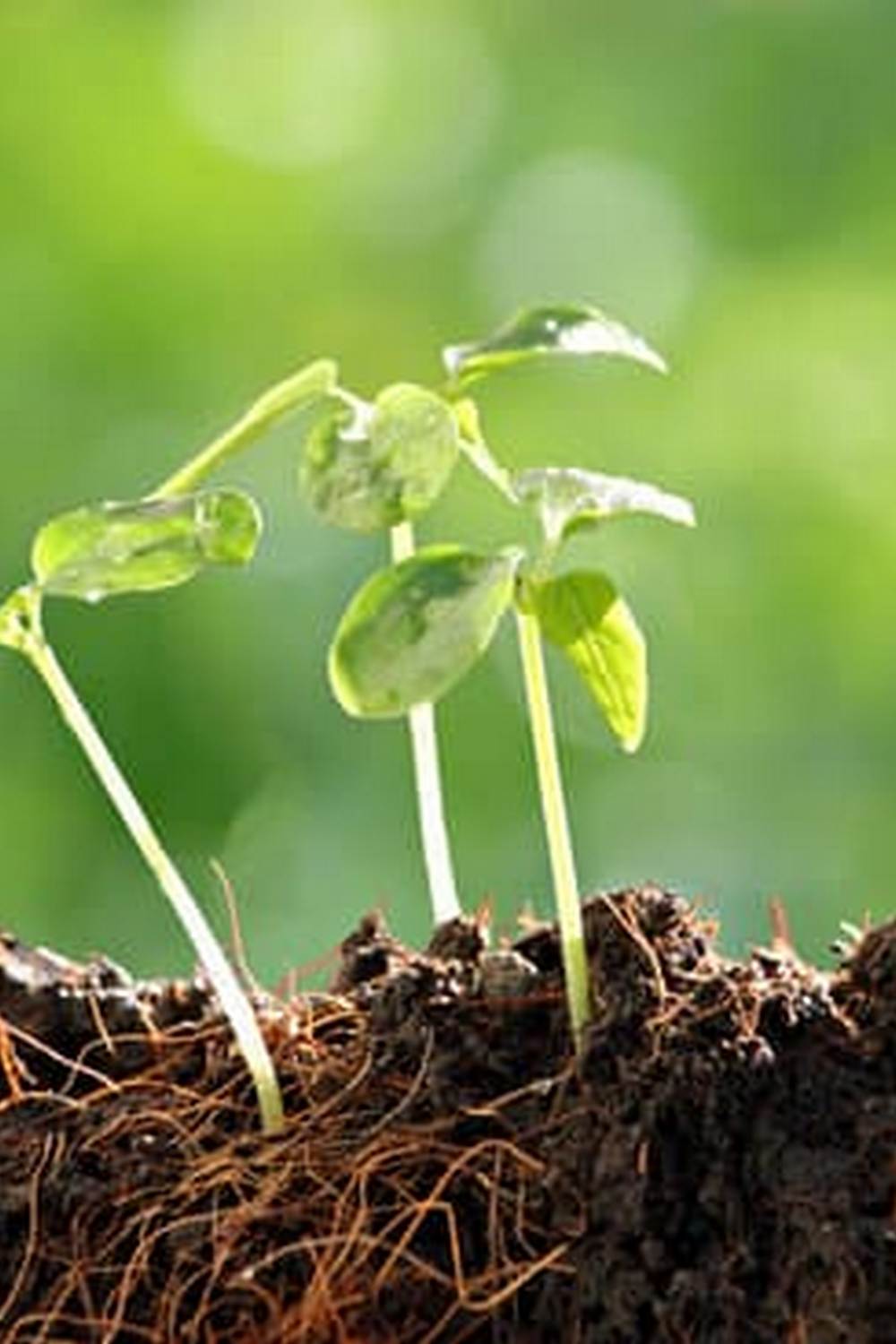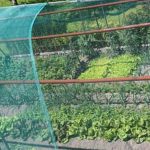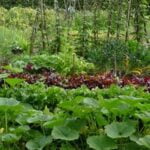Are you considering starting a vegetable garden enclosed in your backyard? Enclosed vegetable gardens offer a wide array of benefits and can be a rewarding and satisfying hobby for anyone with a green thumb.
Enclosed vegetable gardens provide a controlled environment that protects your plants from harsh weather conditions, pests, and other outdoor elements that can damage or hinder the growth of your vegetables. With the right techniques and care, you can enjoy an abundant harvest of fresh, organic produce year-round.
In this article, we will explore the various advantages of having an enclosed vegetable garden, as well as provide tips on selecting the perfect location, choosing the best vegetables, designing and building your garden, maintaining it, dealing with pests and diseases, and ultimately harvesting the fruits of your labor. Whether you’re a seasoned gardener or just starting out, you’ll find valuable information to help you create and thrive with your own enclosed vegetable garden.
Selecting the Perfect Location for Your Enclosed Vegetable Garden
When it comes to creating an enclosed vegetable garden, selecting the perfect location is crucial for the success of your garden. Here are some tips for finding the ideal spot for your enclosed vegetable garden:
1. Sunlight: Choose a location that receives ample sunlight throughout the day. Most vegetables require at least 6-8 hours of direct sunlight to thrive. Observe the sunlight patterns in your yard to determine the best location for your enclosed vegetable garden.
2. Soil Quality: The soil in your chosen location should be fertile and well-draining. Conduct a soil test to check the pH level and nutrient content of the soil. If necessary, amend the soil with compost or organic matter to improve its quality.
3. Accessibility: Consider how easily accessible your enclosed vegetable garden will be for planting, watering, and harvesting. Ideally, it should be located near a water source and within close proximity to your home.
4. Protection from Elements: Look for a location that provides natural protection from strong winds and excessive rainfall. If possible, choose an area that is sheltered by trees or structures to shield your vegetables from harsh weather conditions.
By carefully selecting the perfect location for your enclosed vegetable garden, you can create an optimal environment for growing healthy and bountiful crops.
Remember to consider these factors when planning where you would like to build an enclosed vegetable gardens space so you can ensure a successful harvest. With these items checked off on our list – you too can have wonderful success with gardening.
Choosing the Best Vegetables for Your Enclosed Garden
When it comes to choosing the best vegetables for your enclosed garden, it’s important to consider several factors such as the available space, climate, and level of sunlight. With limited space in an enclosed vegetable garden, it’s crucial to select vegetables that are well-suited for compact growing conditions.
Compact Vegetables
Opt for vegetables that are known for their compact growth habit. This includes crops like cherry tomatoes, dwarf varieties of beans and peas, mini bell peppers, and baby carrots. These smaller varieties take up less space while still providing a bountiful harvest.
Vertical Vegetables
Consider including vegetables that can be trained to grow vertically. Crops like cucumbers, pole beans, and certain types of squash can be trellised or grown on vertical supports, making them ideal for enclosed gardens with limited ground space.
Low-Maintenance Vegetables
Choose vegetables that require minimal maintenance and care. Look for varieties that are resistant to pests and diseases, such as leafy greens like spinach and kale, as well as herbs like basil and thyme. These low-maintenance options are perfect for beginner gardeners or those with busy schedules.
By selecting a mix of compact, vertical, and low-maintenance vegetables for your enclosed garden, you can maximize your harvest while making the most of your limited space. It’s important to also consider the specific growing requirements of each vegetable to ensure they thrive within the confines of an enclosed environment.
Designing and Building Your Enclosed Vegetable Garden
One of the key aspects of having an enclosed vegetable garden is designing and building it to create the perfect environment for your plants to thrive. When starting this process, it’s important to consider the size and layout of your garden. Take into account the space you have available and how you can maximize it to accommodate the vegetables you want to grow.
When designing your enclosed vegetable garden, consider the materials you will use for the enclosure. Opt for sturdy materials that will withstand the elements and provide adequate protection for your plants. Additionally, think about how you will access your garden and incorporate features such as gates or doors to make maintenance easier.
Building your enclosed vegetable garden will require careful planning and execution. If you’re building a raised bed garden, ensure that it is sturdy and level to provide a stable foundation for your plants. Consider incorporating features such as trellises or cages for climbing plants like tomatoes or peas. It’s also essential to provide adequate ventilation within the enclosure to prevent moisture buildup and promote healthy plant growth.
As part of the design and building process, consider incorporating features such as irrigation systems or rainwater collection methods to ensure that your vegetables receive consistent water supply. By carefully planning and executing the design and construction of your enclosed vegetable garden, you can create a thriving environment for growing a wide variety of vegetables year-round.
Essential Tips for Maintaining an Enclosed Vegetable Garden
Maintaining an enclosed vegetable garden requires time, effort, and attention to detail. Here are some essential tips to ensure that your garden thrives:
- Regular Watering: It is crucial to water your vegetables regularly, especially during the hot summer months. Make sure to water at the base of the plants to avoid creating a moist environment that can attract pests and diseases.
- Pruning and Thinning: Keep an eye on your plants and remove any dead or diseased leaves. Additionally, thin out overcrowded areas to allow for proper air circulation and sunlight penetration.
- Fertilizing: Use organic fertilizers to provide essential nutrients to your plants. Be mindful of over-fertilizing, as this can lead to excessive foliage growth at the expense of fruit production.
In addition to these maintenance tasks, it is important to keep an eye out for any signs of trouble in your enclosed vegetable garden. Look for signs of pests such as holes in leaves or chewed fruits, as well as symptoms of diseases like mold or wilting. Promptly address any issues that arise to ensure the health and productivity of your garden.
Lastly, consider implementing companion planting techniques within your enclosed vegetable garden. Certain plant combinations can help repel pests, attract beneficial insects, and improve overall soil health. By taking a proactive approach to maintenance and integrating companion planting methods, you can maximize the success of your enclosed vegetable garden.
Dealing With Pests and Diseases in an Enclosed Vegetable Garden
When it comes to maintaining an enclosed vegetable garden, one of the biggest challenges can be dealing with pests and diseases. However, there are several strategies that can help you keep these issues at bay and ensure a healthy harvest. One key consideration is the use of companion planting, which involves growing certain plants together to help repel pests or attract beneficial insects. For example, planting marigolds alongside your vegetables can deter nematodes and other harmful organisms.
Another important tactic is practicing good hygiene and sanitation in your garden. Regularly removing dead or diseased plants, as well as keeping the area clean and free of debris, can help prevent the spread of diseases. Additionally, rotating your crops each season can disrupt pest life cycles and reduce the buildup of soil-borne pathogens.
Finally, consider using natural pest control methods such as insecticidal soaps, neem oil, or diatomaceous earth. These options are less harmful to beneficial insects and wildlife than chemical pesticides, making them a more environmentally friendly choice for your enclosed vegetable garden.
| Strategy | Benefit |
|---|---|
| Companion Planting | Repels pests or attracts beneficial insects |
| Good hygiene and sanitation | Prevents spread of diseases |
| Natural pest control methods | Less harmful to beneficial insects and wildlife |
Harvesting and Enjoying the Fruits of Your Enclosed Vegetable Garden
The Joy of Harvesting Your Homegrown Vegetables
After putting in the hard work of designing, building, and maintaining your enclosed vegetable garden, it’s finally time to reap the rewards. There’s something incredibly satisfying about harvesting your own homegrown produce.
Not only does it save you money at the grocery store, but the flavor and freshness of homegrown vegetables simply can’t be beaten. Whether you’re picking ripe tomatoes, crisp lettuce, or plump zucchinis, the joy of harvesting is one of the most rewarding aspects of having a vegetable garden.
Ways to Enjoy Your Freshly Harvested Vegetables
Once you’ve harvested your vegetables from your enclosed garden, there are countless ways to enjoy them. From simple salads and stir-fries to homemade sauces and soups, the possibilities are endless. Many gardeners also preserve their harvest by canning, pickling, or freezing their vegetables to enjoy them throughout the year. Additionally, sharing your bounty with friends and family can be a great way to spread the joy of homegrown produce.
Benefits for Your Health and Wellbeing
Not only do homegrown vegetables taste better than store-bought ones, but they also offer numerous health benefits. Freshly harvested vegetables are packed with nutrients that are essential for a healthy diet. By growing your own vegetables in an enclosed garden, you have full control over how they are grown and can avoid harmful pesticides and chemicals often found in commercially grown produce.
Plus, spending time outdoors tending to your garden is an excellent way to get some exercise and reduce stress levels. The satisfaction of growing and enjoying your own vegetables has positive effects on both physical and mental wellbeing.
Conclusion
In conclusion, having an enclosed vegetable garden can bring joy and satisfaction to any gardener. The benefits of having a designated space for growing your own vegetables are numerous, including the ability to control the environment, protect against pests and diseases, and maximize the productivity of your garden.
By selecting the perfect location, choosing the best vegetables, designing and building your garden, and following essential maintenance tips, you can create a thriving enclosed vegetable garden that will provide you with a rewarding harvest.
One of the most rewarding aspects of having an enclosed vegetable garden is being able to enjoy the fruits of your labor. There is something incredibly satisfying about being able to harvest fresh produce from your own backyard and knowing that you played a role in its growth. Whether it’s picking ripe tomatoes for a salad or snipping off fresh herbs for a delicious meal, there is nothing quite like the taste of homegrown vegetables.
Furthermore, an enclosed vegetable garden not only provides you with fresh and flavorful produce but also offers numerous health benefits. You can be assured that your vegetables are free from harmful pesticides or chemicals, making them safe and nutritious for you and your family to consume. In addition, gardening itself has been proven to reduce stress and improve mental well-being.
So not only will you have access to delicious and healthy vegetables, but you’ll also experience the joy of tending to your garden and watching it flourish. Vegetable gardens enclosed are truly a source of joy for any gardener.
Frequently Asked Questions
Should I Enclose My Vegetable Garden?
Yes, enclosing your vegetable garden can be a good idea to protect it from pests, small animals, and harsh weather conditions. It can also help to create a more controlled environment for your plants to thrive.
How to Build a Vegetable Garden Enclosure?
Building a vegetable garden enclosure can be done using materials like wood, PVC pipes, or metal fencing. The key is to create a structure that provides sufficient protection while still allowing sunlight and water to reach the plants.
What Is an Enclosed Garden Called?
An enclosed garden is commonly called a “greenhouse” or a “hoop house.” These structures are designed to provide a sheltered environment for plants to grow, extending the growing season and protecting them from external threats.

If you’re looking to get into vegetable gardening, or are just looking for some tips on how to make your current garden better, then you’ve come to the right place! My name is Ethel and I have been gardening for years. In this blog, I’m going to share with you some of my best tips on how to create a successful vegetable garden.





